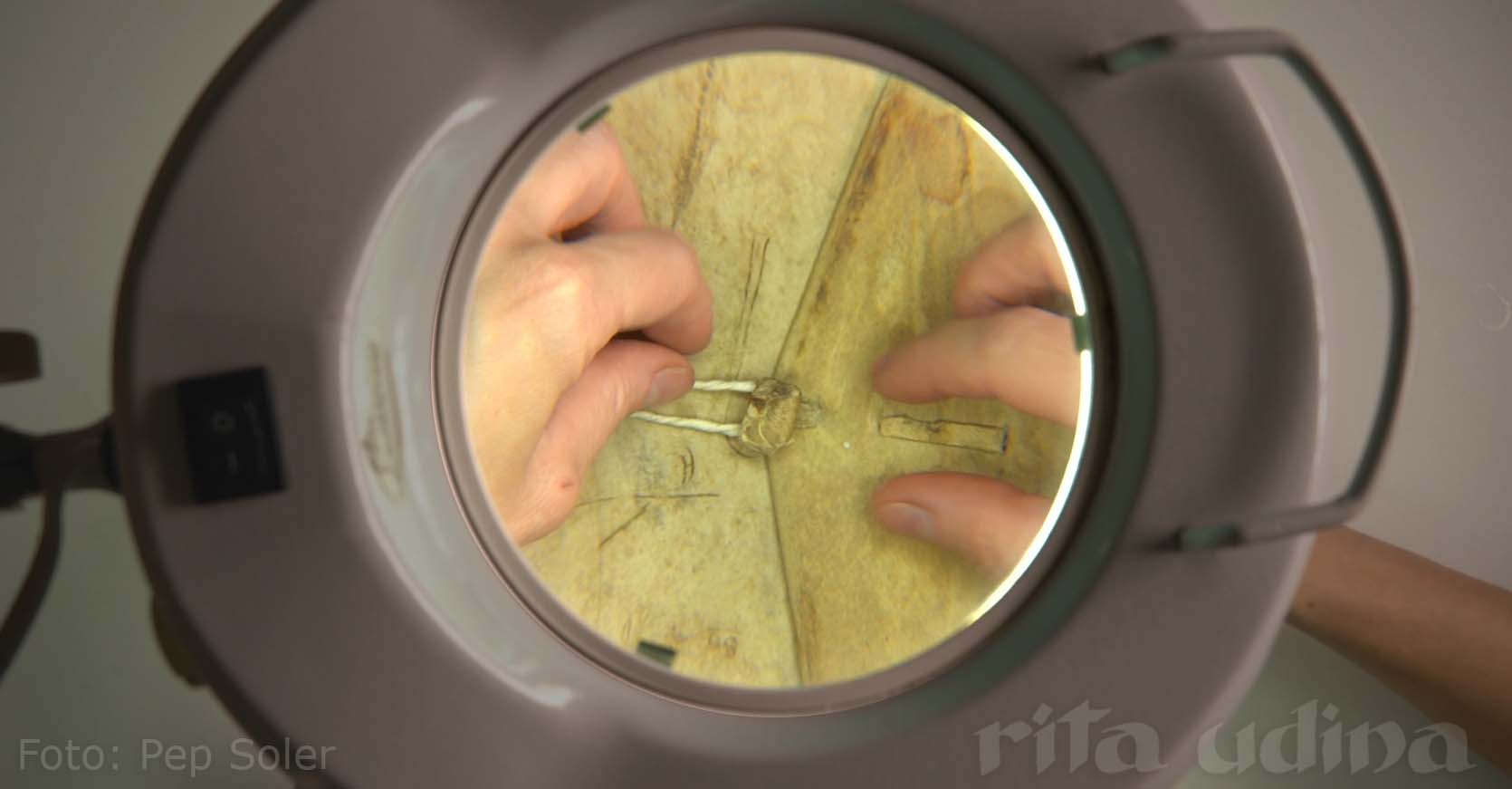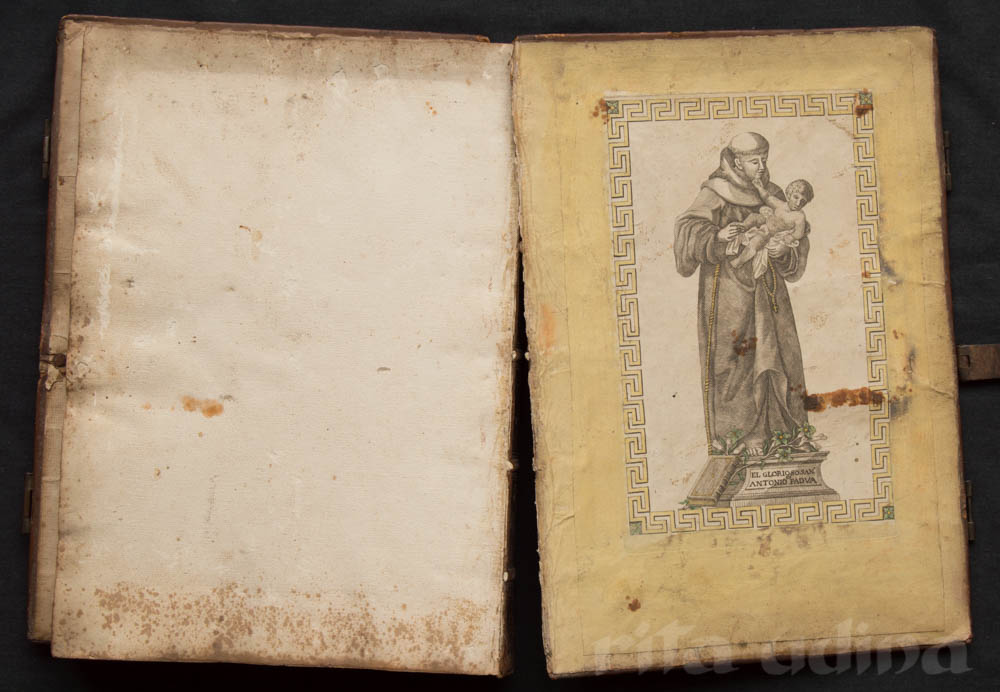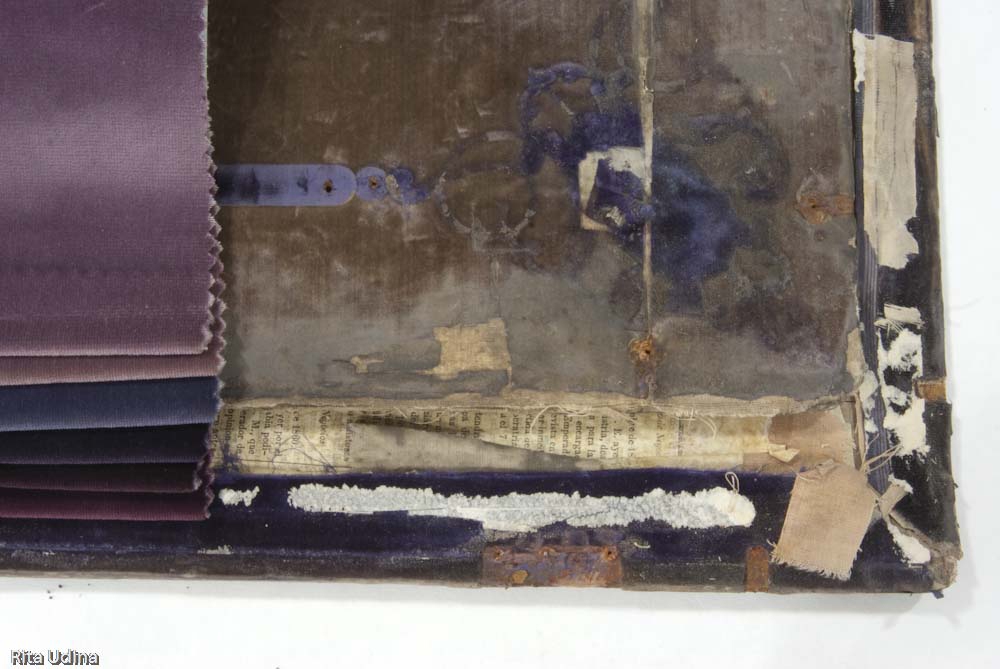libraries
Find below the blog posts related to libraries:
Profession: book and paper conservator
What does a paper conservator do? Whom does she work for? What skills and knowledge does she ought to have? Preservation and conservation, a field linked to science, history and arts and crafts. A video explains what differenciates us from forgers and shows -among other- how we produce a hand-made suction table to restore paper artifacts, with loads of creativity, a feature most necessary to become book and paper conservator.
Unlocking St. Anthony’s locked manuscript
"Tony, Tony, come around, something’s lost and can’t be found!" Some manuscripts require more than just manual skills to succeed in their conservation, and so we prayed to Saint Anthony to help us unlocking the bookbinding, whose key had been lost forever. Certainly not many renaissance bookbindings have an iron safety lock in their covers and thus this extra holly help was deemed quite necessary. The prayer didn't provide any key, but at least a satisfactory conservation solution was achieved!
The bookbinder’s secret library
Cambras, one of the most popular bookbinders from Barcelona, always welcomes me with a wide smile and a sarcastic look. Smiles turn to laughter when we get down to our issues: -But... you are not pasting the spine of my book with PVA glue, are you?! I ask him while my eye seeks for his secret library...
“Smart books” and bibliographic terrorism
Terrorists do not always carry explosives or mallets, nor they come from overseas, it may even be people in charge of collections. We ought to deal with them to safeguard "smart books": books intelligently made, such that no material interfere with each other, on the contrary, they create formidable synergies. Each one has its peculiarities, its beauty and its function. They represent a compendium of technology, art, society and culture at the time and place in which they were created.
Bibliopaths: The case of the lacquer binding
Are we supposed to fear bibliopaths? Or maybe we should give them an award? Who are they? Atention! Because they can be among us, or we might even be one of them?! I invite you to read the Case of the Lacquer Binding to know more about them
I have mold! (…or is it foxing?)
Foxing is mould... or not? One of the main concerns in archives and libraries is the presence of mould. Not surprisingly: it develops without fanfare, and when it is detected, an irreversible loss of information might have taken place. Before pulling your hair out, you should identify whether the symptoms actually reveal fungal activity, or not. Not an easy assessment.
Choirbooks, and much more, at the Spanish National Library
Led by Luis Crespo and Arsenio Sanchez, restorerss in the National Library, we visit the fascinating world of book illuminated miniatures, choir books, manuscripts ... Latest technological resources, ancient tradition, and above all their experience and knowledge, allow the recovery of these bibliographic jewels exhibited now at the National Library of Spain.
Books washing-machine and new conservation methods for leather bindings
From the books washing machine to new methodologies for leather bindings restoration, a visit to Domènec's restoration studio is always a great pleasure!
Gone with the wind
I don’t like much having war books, but I must admit that this one is particularly beautiful. The velvet binding seemed to me a challenging issue on the restoration, which did not have major complications besides this. I show the restoration of this book because of the headaches it has given me when solving the lost areas, the wooden work. The considerable losses on a laborious woodcarving work, and the lack of originals of many of the missing pieces fairly complicated the subject (the shields on the corners were different).
The value of things
Inpainting is the main controversial in a restoration as it demands to set criteria in not at all trivial matters: Meaning, function and unique nature of artefacts.
Categories
ARTEFACT
archive or library
book
book structures
bundle
headband
hollow back
limp-vellum binding
locks
sewing
tight back
document
seal
lacquered seal
printed stamp (see TECHNIQUE)
drawing
manuscript
photograph
albumen
daguerreotype
glass plate
silver gelatine
plans, maps, architectural or technical drawings
maps
plans
poster
DAMAGES
acidity / oxidation
bibliopath - graphopath
disaster
flood
foxing
losses, gaps
pests & paper eaters
insects
silverfish
woodworm
microorganisms
mold
pressure sensitive tapes
silver mirroring
structural
wrinkles
MATERIAL
fabric
cotton
silk
velvet
glass
leather
parchment
metal
paper
coated paper (art paper)
Kraft paper
laid paper
rag paper
tracing paper
impregnated paper
onion skin paper
Washi
wood pulp paper
plastic
cellulose acetate
polyethylene terephthalate (PET)
Polypropylene (PP)
wood
PRODUCTS
adhesives
natural
shellac
rubber (natural)
starch paste
synthetic adhesives
Filmoplast®
Paraloid B72
rubber (synthetic)
Tylose® (MHC)
gels
agarose
chemical gel
hydro-gels
Klucel®
organo-gels
physical gels
Velvesil Plus
xanthan gel
nanoparticles
solvent
benzyl alcohol
ciclometicone
diethyl carbonate
dimethyl sulfoxide (DMSO)
polyethylene glycol (PEG)
surfactants
TECHNIQUE
ballpoint pen
collage
felt-tip pen
gouache
graphite (pencil)
ink
print
engraving
etching
lithograph
woodcut
printed stamp
reproduction
diazotype
watercolour
THEORY on cons. & rest.
TOOLS, MACHINES
TREATMENTS
bleaching
cleaning
stain removal
surface cleaning
tape removal
varnish removal
wet cleaning
deacidification
digitization
flattening
flattening under tension
housing (storage)
box
folder
four flaps envelopes
inpainting
mimetic in-painting
neutral colour in-paint
mould treatment
preventive conservation
climate (HR, temp.)
re-binding
reinforcement - consolidation
backing with fabric
Infilling
leafcasting
ink fixing
lining
sizing
tear repair
varnishing


















